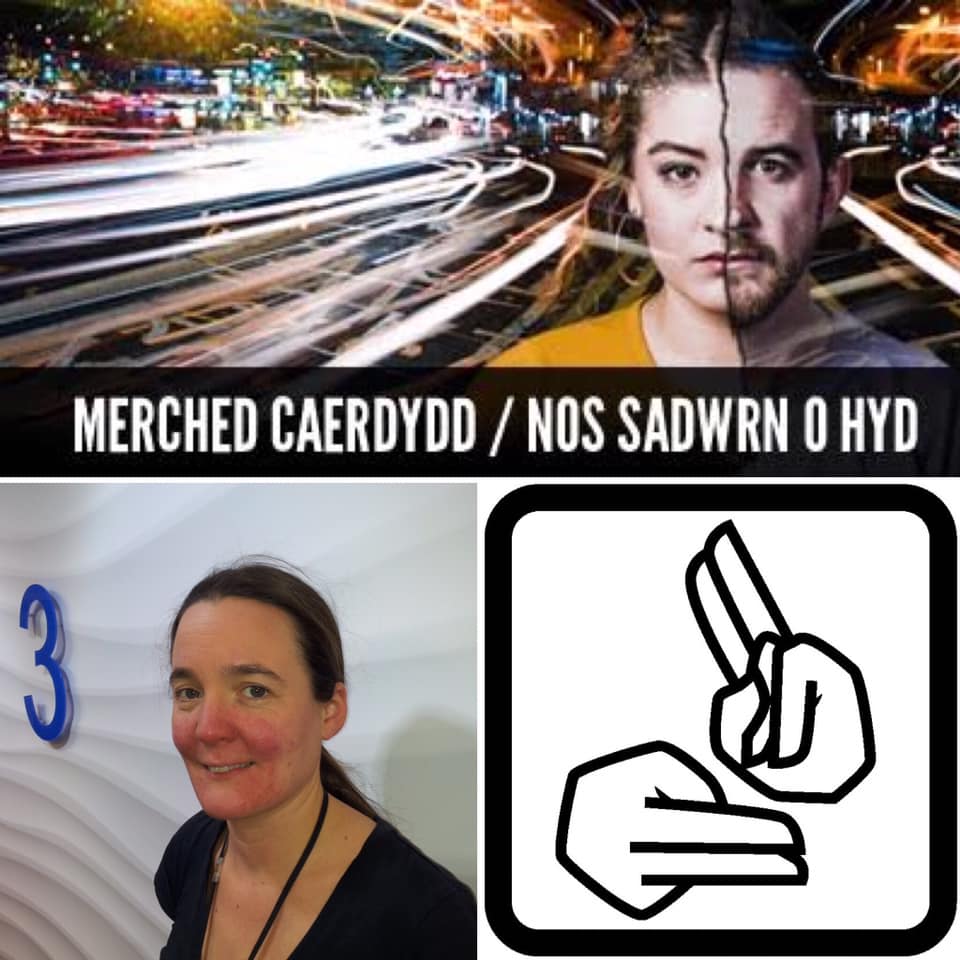
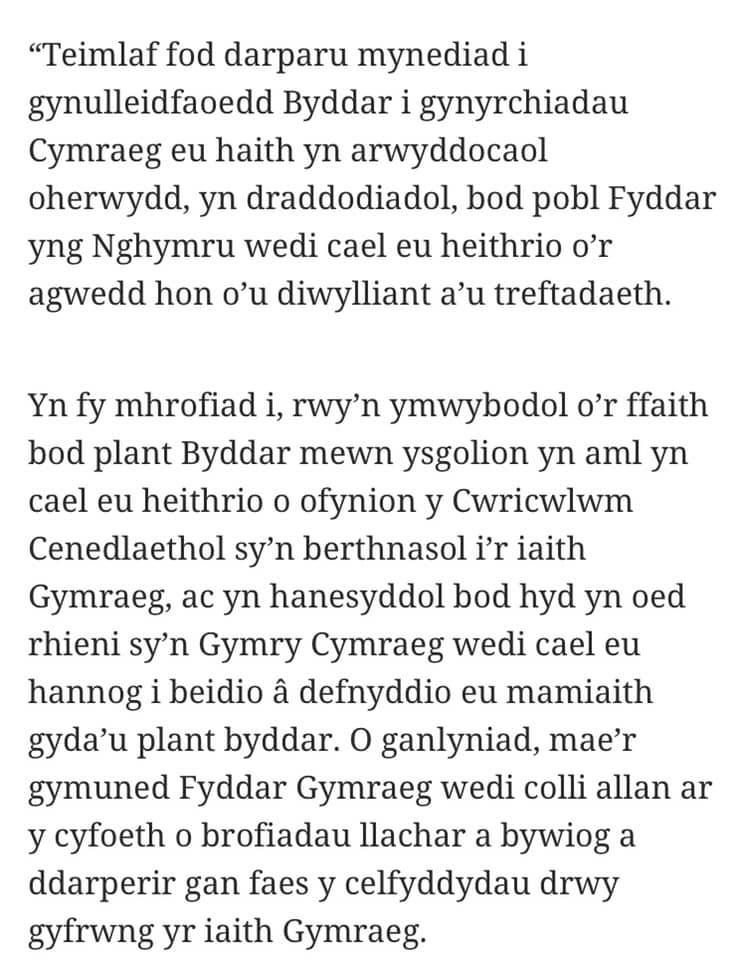
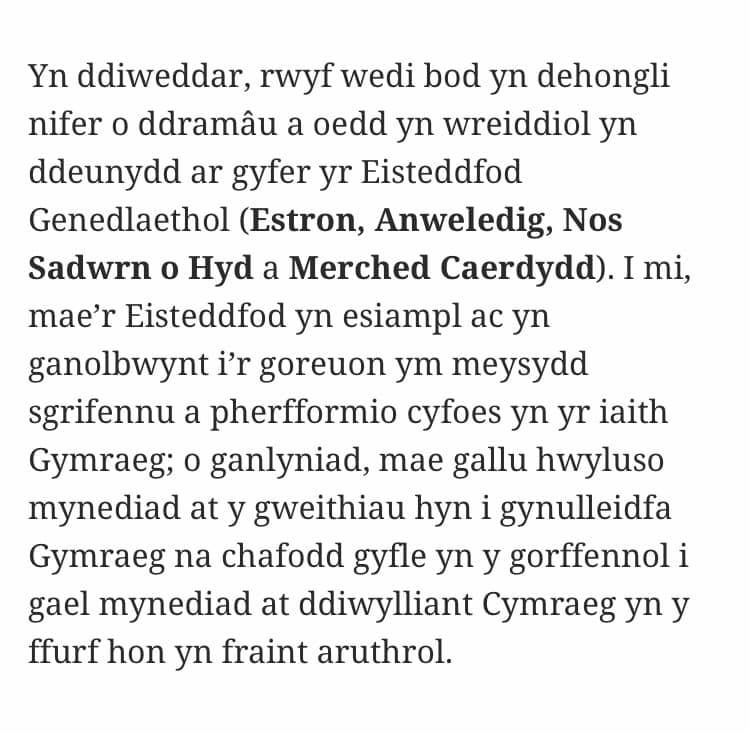
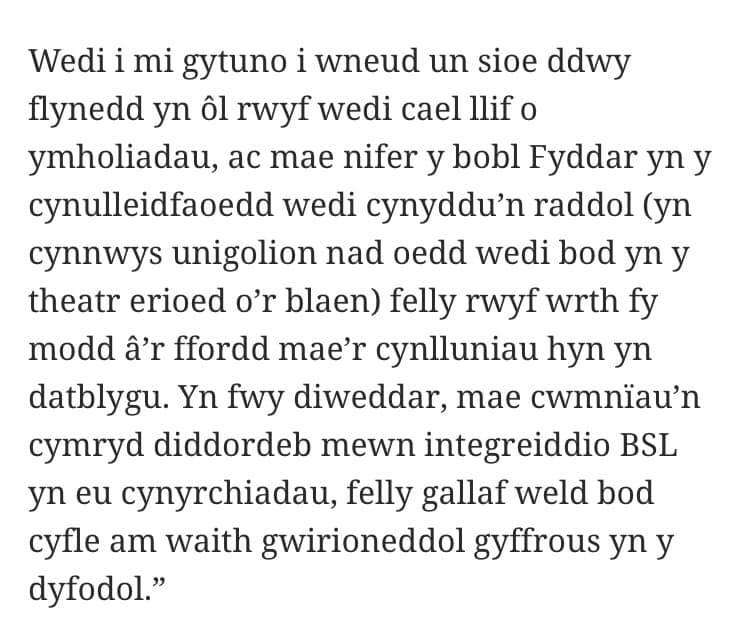
http://theatr.cymru/portfolio/merched-caerdydd-nos-sadwrn-o-hyd/
 (3 / 5)
(3 / 5)
Bummer and Lazarus is an absurdist play by Yorkshire-based Big Egg Theatre. Loosely based on two real-life dogs of legend from 1860’s San Francisco, we follow Bummer and Lazarus as they try to find food and a way out of the room they are stuck in.
Whilst Lazarus has an existential crisis and is desperate to know the meaning of everything, Bummer is much more grounded and focused on the goal of escape. Lazarus asks an infinite amount of questions before truly testing Bummer’s patience, driving the conflict throughout.
The writing from Jack Harrison varies a lot. There’s a lot of subtlety to the writing which is brilliant and the rhythm at times is great. But the mood and tone rarely shift which makes the production a little stale.
Bummer explains the existence of time, inanimate objects and indeed existing itself to the curious Lazarus. However, this is all stuff the audiences knows and the novelty of Lazarus’ innocent thirst for knowledge wears off quickly.
These conversations fill the time but don’t hold the attention. There is some wit and humour, but really not enough to carry the play. The subtlety of the relationship changes are good, but ultimately the play doesn’t fulfil its potential.
The performances also vary. The physicality between the two is generally good. Bummer the old, wise, beaten dog and Lazarus an excitable puppy. But where the physicality works, the emotion behind the characters feels bland and underdeveloped. Perhaps an issue with the writing but the performances from Jack Harrison and Alec Walker don’t do enough.
Some people will love this show. If you can get over the issues, there are certainly things to enjoy in this production. If you’re a fan of absurdist theatre, then definitely go and see this. The potential is certainly there, it’s just not quite hitting every note.
Bummer and Lazarus is an absurd comedy about two dogs working through an existential crisis that doesn’t quite realise its potential.
Bummer and Lazarus is part of The Other Room’s ‘Spring Fringe’ curated spring season. One of eight shows coming to Cardiff’s only pub theatre over eight weeks. Tickets can be found for this and other upcoming Spring Fringe shows HERE, with an ever-growing discount for the more shows you book.
Bummer and Lazarus performed at The Other Room
05 – 08 March 2019
Presented by Big Egg Theatre Company
Written and Directed by Jack Harrison
Produced by Lydia Harrison
Performed by:
Lazarus – Jack Harrison
Bummer – Alec Walker
Assistant Director – Dave Reeson
 (4 / 5)
(4 / 5)
See-Through is an amusing exploration of Claire Gaydon, a 29-year-old, Drama school graduate, “giving it a go” on the old YouTube. A semi auto-biographical play about boundaries online, oversharing and the relationship between a mother and daughter.
The play opens with Claire Gaydon singing ‘Gimme More’ by
Britney Spears, (an excellent song choice), before she sits down, back to the
audience and presents herself through a screen.
Early on, Gaydon establishes her character and tells us this is a true story with a few fabrications. The character finds her voice and begins establishing her channel. Starting out with generic challenges and funny videos with her mother. The more she shares, the quicker we learn that other content will get more views.
In particular, content where Claire overshares with titles such as “Sex and Weed”. The more she overshares, the more she knocks down the boundaries between her and the audience. Eventually, Gaydon goes too far and shares a very personal experience. Something she hasn’t even told her mother, who subsequently finds out through the video. This forces Claire to re-evaluate and reflect on her YouTube experience.
The performance from Claire Gaydon is strong. It’s obviously a personal piece, but one she is critical and self-aware about in her performance. Gaydon obviously enjoys the funnier moments of the script, but it is the more serious ones where her performance is strongest.
The writing is witty and amusing but doesn’t hold back on personal details of the character. Despite seeing the majority of the performance via a screen, we get to “see-through” to the emotion of the character behind the screen. This is something we don’t get in real world YouTube which works really well and is a really nice concept.
A worry going in was that the play would trivialise YouTube a bit, but it doesn’t do this. Another worry was that the use of technology would take away from the intimacy of the play. But if anything, it allows us to get even closer to the character. Gaydon just has fun with it and through a good use of technology delivers an interesting piece both in terms of its content and presentation.
There are moments that could be cut a little. Moments that drag, especially near the start, where Claire researches YouTube – which ultimately serves as a quick introduction to audience members who are not so familiar with the platform. We learn a little about the character through this, but really not enough for the opening minutes. This is, however, carried well by humour and is the only real blip in the production, and one which is ultimately understandable.
See-Through is not the most plot-heavy play, but its strength isn’t in the plot. There is a story that jumps around in terms of timeline, revealed through the screen chronologically. But this is more of a character-based piece which peaks as we eventually go behind the screen and see Claire writing a letter to her mother.
A real strength of the play is that it could go down with any age-group. Anyone “older” who is put off by the mention of YouTube really needn’t be. It’s objectively funny and enjoyable as well as having a deeper message and a story to tell which will resonate with almost anyone in some way.
The message is subtle and well crafted, which is a testament to the writing and performance of Claire Gaydon. It’s intimacy and excellent character work will have you thinking about it long after the production is over.
See-Through is a humorous, intimate and emotive play that explores the character behind the screen of an aspiring YouTuber.
See-Through
is part of The Other Room’s ‘Spring Fringe’ curated spring season. One
of eight shows coming to Cardiff’s only pub theatre over eight weeks. Tickets
can be found for the upcoming Spring Fringe shows HERE, with an
ever-growing discount for the more shows you book.
SEE
THROUGH performed at The Other Room
21st – 24th February 2019
Created, performed and presented by Claire Gaydon
Associate Directors: Jaz Woodcock-Stewart and Grace Gibson
Music by James Jacob
Video Editing Support: Joseph Brett
Stage Manager: Ben Lyon
 (4 / 5)
(4 / 5)
Just a Few Words explores the psychological and emotional impact of having a stutter. How that affects your everyday life and indeed, your love life. We follow our protagonist (Nye Russell-Thompson) as he struggles to tell the woman he loves how he feels.
I’d heard a lot about
this piece and my main worry going in was that the writing would be structured poorly.
This isn’t a worry that need be had. The writing from Russell-Thompson is
brilliantly structured as we follow the protagonist’s journey through his mind,
preparing what to say.
Just a Few Words is
frustrating at times as a slow-moving piece of theatre, deliberately so. This
allows the audience to imagine, if not feel, the frustration that can be felt with
a stammer. Not to pity but understand. You never feel sorry for the character
which is a real strength of the piece. He feels like someone going through
something which is presented as normal and relatable.
A one-man-show created
and performed by Russell-Thompson, you can’t help but notice how this is more
real to Nye than it would be to another actor. Even without the knowledge of
who he is. This is a credit to his abilities as an actor, but also serves as a
note to organisations who don’t hire disabled actors to play the roles their
disabilities represent.
The debate about
stammering being a disability will continue, a debate I’m not qualified to
comment on and one this production doesn’t claim to solve. But what this play does
present clearly is that Just a Few Words is
stronger because of Nye’s personal performance. And it is the character’s
emotive story that is the main strength of Just
a Few Words.
The music and sound utilised in the production are excellent. From stuttering on an Otis Redding love song played on a record player in the beginning, to a grainy, static from said record player that runs for the entirety of the play. The sound is simple but adds a huge amount to the ambiance.
The minimalist set is great too. A record player in one corner, a table in another and the use of pre-written cards which act as subtitles for our protagonist’s thoughts that scatter around the stage complete the show and makes it everything fringe theatre should be.
Just a Few Words is an excellent and relatable portrayal of life with a stammer, blending a beautifully minimalist approach with powerful writing.
Just a Few Words is part of The Other Room’s
‘Spring Fringe’ curated spring season. One of eight shows coming to Cardiff’s
only pub theatre over eight weeks. Tickets can be found for the
upcoming Spring Fringe shows HERE, with an ever-growing discount for the more shows you book.
JUST A FEW WORDS performed at The Other Room
13th February – 16th February 2019
Presented by StammerMouth
Created and Performed by Nye Russell-Thompson
Stage Manager: Megan Randall
 (5 / 5)
(5 / 5)
Blue is a powerful drama set by the Welsh, Carmarthenshire coast which centres around the Williams family dinner in the looming absence of a father figure.
The play starts when daughter Elin brings former teacher, Thomas, home to sleep with him. However, to Elin’s surprise her brother is in and her mother home early. A confusion over Thomas’ presence ensues and drives the play forward.
Thomas finds himself awkwardly
caught in a family argument under tragic circumstances but is ultimately the
trigger for improvement and progress amongst the family.
The writing from Rhys Warrington is brilliant. Meticulously paced and incredibly detailed, the script starts out light-hearted and funny but as it progresses, and delves deeper into the characters, we notice something isn’t normal. At no point does anything feel forced, the play flows naturally and develops with great care.
Blue is subtly political in talking about lack of funding for the NHS. But doesn’t stray from the importance of the characters involved whose lives are being ruined by these cuts.
It’s fair to say, Rhys
Warrington is off to a great start with his first feature-length play and I can’t
wait to see what he writes next.
The direction from Chelsey Gillard is simply stunning. Every aspect of the script is explored diligently. This play could have been easily mismanaged but Gillard controls it masterfully. Beautifully allowing performers time to draw scenes out and the design elements to set the scene. Chelsey Gillard is forging a name for herself as one of the pioneering directors of contemporary Welsh theatre and her achievement with Bluehas only boosted that claim.
The performances are exceptional
from every performer. Sophie Melville is brilliant as Elin. Proving once again
what a talent she is, Melville encapsulates the final stages of teenage angst
with growing mid-20’s maturity brilliantly.
Gwydion Rhys plays Elin’s shy brother, Huw, expertly. His eyes lighting up the moment Thomas asks about Minecraft. A heart-breaking and simultaneously heart-warming moment as it’s clear this is the first time someone has taken an interest in his interests outside of his online alternate-reality. We can all relate in some way to Huw and Rhys’ portrayal is a testament to this.
Jordan Bernarde’s performance as Thomas is handled with as much care as the character is attentive to the others. We can sense Thomas’ awkwardness and even though we’re aware he’s really there to sleep with Elin, we see his kind-hearted nature too. It’s only when Thomas exits the play that you realise the impact Bernarde’s performance has on the production.
Choosing a standout performance is near-impossible, but if we are to do so, it has to be Nia Roberts in portraying the matriarch figure, Lisa Williams. Everything is perfect from Roberts in this performance. At the mention of her husband, everything about her character changes, from tone to body-language – perfect. This performance will standout as one of the best in Wales this year.
The sound design from Tic Ashfield is very understated and effective. The sound mostly soothes into the background, almost unnoticeable if you’re not looking for it – but is powerful and essential to the production.
Oliver Harman’s design is
simple and functional. Detailed to what one would expect any living/dining room
to look like, with nothing left to waste. The blue door is, in particular, a
nice touch.
Ceri James’ lighting is an essential tool for setting the mood, which James does excellently. Subtly changing throughout and providing a nice alternative to blackouts between scenes which is specifically good. The slight blue tint in some of the lighting is also lovely.
It’s frustrating when a production leaves the design elements as an after-thought and whilst it’s very subtle in Blue, the design, on all fronts, contribute hugely to Blue’s artistic success.
It’s important to stress what a team effort this production is. Huge credit must also go to Rebecca Jade Hammond for creating and producing this piece, as well as all involved at Chippy Lane and Chapter in the making of Blue.
BLUE is
a heart-breaking drama about a family split in their grief of a father figure
who is both no longer present and not yet absent.
BLUE performed at Chapter Arts Centre, Cardiff
World Premiere 5th – 16th February 2019
Running time approximately 90 minutes
Created and Produced by Rebecca Jade Hammond
Written by Rhys Warrington
Directed by Chelsey Gillard
Cast:
Elin – Sophie Melville
Thomas – Jordan Bernarde
Lisa – Nia Roberts
Huw – Gwydion Rhys
Designer: Oliver Harman
Lighting Designer: Ceri James
Sound Designer and Composer: Tic Ashfield
Dramaturg: Matthew Bulgo
Co-Producers: Chippy Lane Production and Chapter
Stage Manager: Bethan Dawson
Production Assistant: Sophie Hughes
BSL Interpreter: Sami Thorpe
Photography: Kirsten McTernan
Marketing and PR: Chloe Nelkin Consulting & PR
 (3 / 5)
(3 / 5)
Laurie Black is sick of humankind and decides to take us on her journey to be the first woman on the moon. A contemporary cabaret show that showcases Black’s musical and comedy abilities through her quirky, green alter-ego (who might not be an alter-ego).
Black takes us on her journey
escaping Earth and encountering David Bowie’s alien spaceship (yes) before
landing on the moon. The journey, which takes three-days but feels like an hour,
is a fairly simple one as far as plot goes but exists to give context and thematic
links to the main event of comedy and music.
Black’s music is a varied mix of genre that, for the most part, has a somewhat futuristic feel. She exploits the sounds of synths, piano and a small drum machine well on stage. But, it is Black’s enthralling voice which captures the audience the most. Not relying solely on her voice however, Black is also a great songwriter using witty pop culture references, the occasional political statement and comedic wordplay.
Mostly original music,
there are some covers of popular songs in Space
Cadette. Starman by David Bowie stands out as a strong point where the
audience are encouraged to sing along with the “la, la, la”s. There are also covers
of Radiohead, Muse and Leonard Cohen as well as a funny reference to The
Proclaimers.
The comedy and storytelling that comes between the songs was usually good. Nothing to make you belly-laugh, but enough to keep you interested. It is fair to say also, that the comedy suffered due to the low turnout on the night. Some jokes are sleepers which will have you chuckling two-hours after the show as you walk home in the rain – which Black correctly predicts.
The stage set-up is simple.
For the most part it’s just a microphone stand and a piano. This worried me at
first, but as the show goes on, it isn’t an issue as Black keeps the attention
on her. Except for one moment when she gets out her mini-moon that she passes
around the audience.
There’s a lot of frustration in the show that gets channelled into humour and songs. On Black’s journey to the moon, we see further into her persona and whilst the outer-shell is hard, by the end we can tell she secretly loves us. There’s no particular agenda to the piece but an overriding theme of frustration at the current state of the world.
Space Cadette is part of The Other Room’s ‘Spring Fringe’ curated spring season. One of eight shows coming to Cardiff’s only pub theatre over the next eight weeks. Tickets can be found for Space Cadette and other Spring Fringe shows HERE, with an ever-growing discount for the more shows you book. If you can’t make the show, but like the sound of Laurie Black, you can find her music on most streaming services online.
Space Cadette is
an enchanting, funny cabaret show from Adelaide Fringe 2018 winner, Laurie
Black. An exploration to the moon that has so much to say about Earth.
SPACE CADETTE at The Other Room, Cardiff
5th February – 8th February 2019
Created and performed by Laurie Black
Technician: Garrin Clarke

Rebus: Long Shadows is a new story written by critically-acclaimed author Ian Rankin and adapted exclusively for the stage by award-winning playwright Rona Munro. Starring Ron Donachie, Cathy Tyson and John Stahl, the story follows the titular DI, one of Scotland’s most famous fictional detectives, now retired, as he exhumes the faux pas of the past to find justice in the present.
Though I don’t claim to be a Rebus aficionado by any stretch of the imagination, I’ve enjoyed the various incarnations of the character, though for different reasons. DI John Rebus, played onscreen by John Hannah and Ken Stott, is the archetypal hard man, a gruff detective and former SAS soldier with PTSD and a serious drinking habit. Hannah’s Rebus was a youthful yet world-weary DI with a whole host of personal demons despite his fresh-faced looks. Stott’s Rebus, replacing Hannah in season 2, was a more convincing cynic given his age and natural gruffness. Both versions boast a bleak brutality, but Hannah’s inner monologue denoted a more internal, psychological approach, whereas Stott’s Rebus was more external and thus retained a greater sense of mystery and ambiguity.
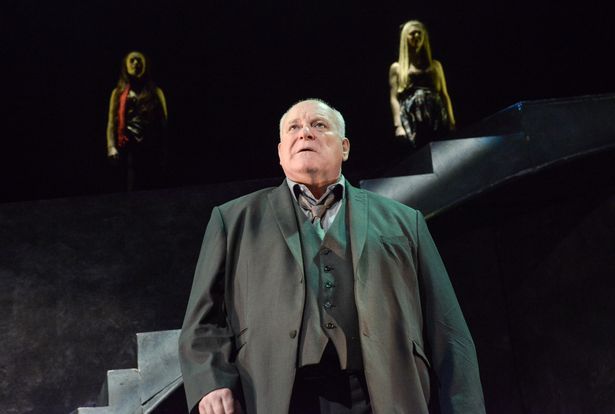
Long Shadows’ Rebus seems to be pitched somewhere between the two, played here by Ron Donachie who portrays the character in the BBC radio dramatizations of Rankin’s novels. Donachie is a very genial stage presence, a lovable curmudgeon who is plagued by the ghosts of past. Rebus is not so much an analogue detective in a digital age as a displaced Diogenes trying to make it in millennial Edinburgh.
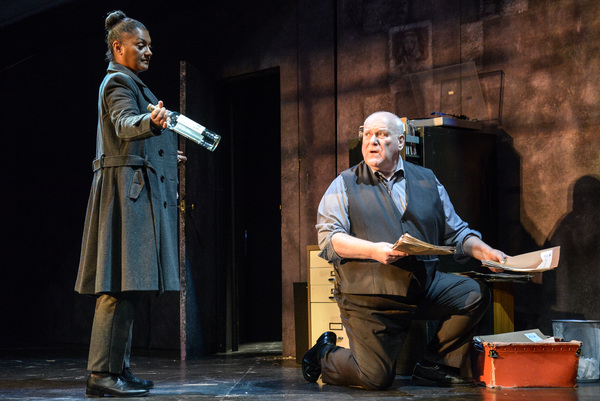
It was disappointing not to see Cathy Tyson as Rebus’ procedure-driven protégé DS Siobhan Clarke (played by Gayanne Potter/Claire Price in the series), but understudy Dani Heron does a great job as the jaded DS even if she doesn’t look old enough to have been working a case for a quarter of a century. Her banter with Donachie is one of the show’s highlights, as both actors ably conjure that catty camaraderie of a long-lived friendship. She also gets one of the show’s best lines when Rebus frets about ‘the way lassies dress these days’, by responding that ‘young women can’t be prisoners of their fathers’ fears’.
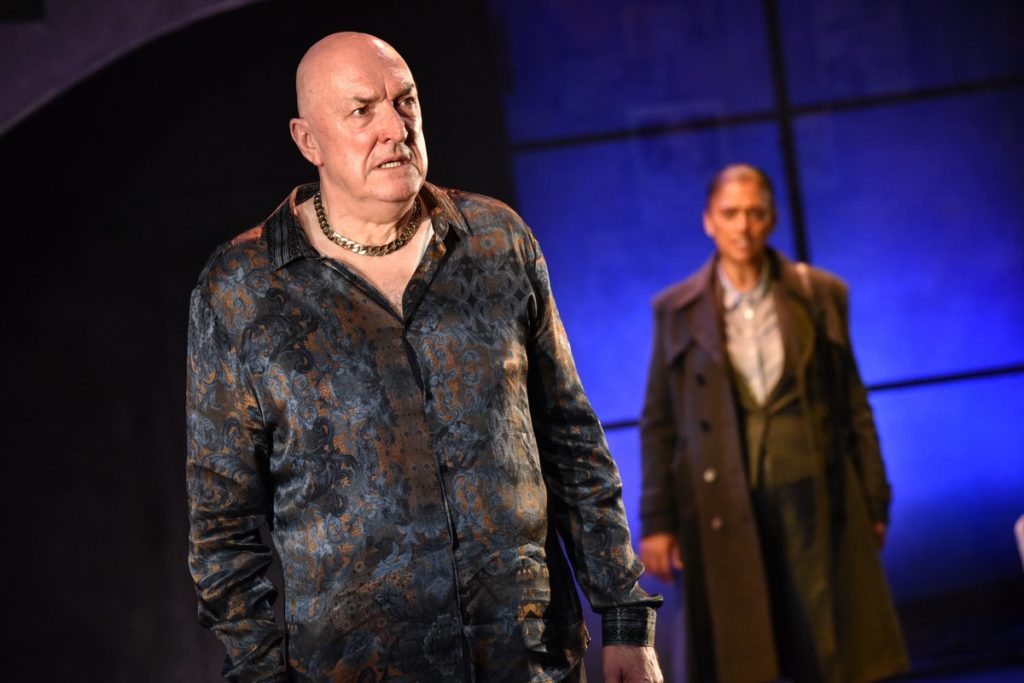
The cast is brilliant across the board, from Eleanor House and Ellen Bannerman as the ghosts of the victims Rebus failed to save – the former of whom also plays the dual role of (murdered) mother Maggie and (surviving) daughter Heather – and Neil McKinven masters multiple roles with charm and skill whilst making each one distinctive and memorable. However, the standout of this production is John Stahl as ‘Big Ger’ Cafferty, Rebus’ amiable nemesis. There’s a layer of artifice to every actor in the show except Stahl, who imbues an earthy authenticity into the vibrant, larger-than-life (in name and nature) character. Stahl’s deliciously imperious performance captivates from the second he steps onstage, slipping seamlessly from debonair to devilish in a way that could have be cartoonish in the hands of a less capable actor. His performance is worth the price of admission alone.
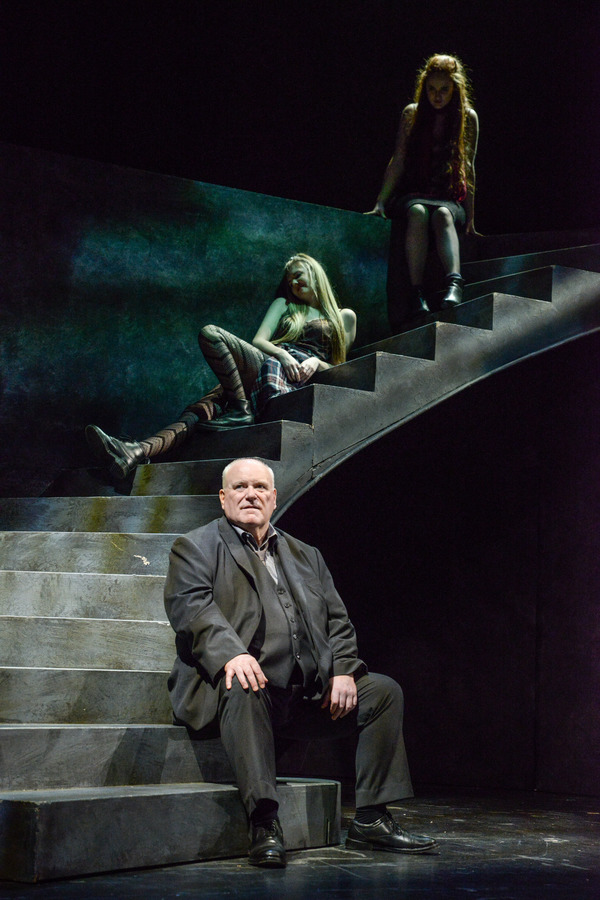
Rona Munro’s script is interesting and engaging, and
Robin Lefevre’s skilful direction guides the audience through the murky mystery. The surname Rebus originates from the phrase ‘Non verbis, sed rebus’ (‘not by words, by things’), a phrase which describes a form of heraldic expression used in medieval times that used symbols, pictograms and illustrations to represent new words/phrases. This was taken up by Sigmund Freud, who believed dreams could be (re)interpreted in a similar way. It’s a fitting name for a gritty detective who has to sift through reams of fakeries and facades to find the villainy behind the civil veneer.
The production has a number of discretely creative touches, predominantly Ti Green’s evocative set featuring a central curving staircase that takes us down into the lair of Rebus’ mind, and a set which functions interchangeably as a poky flat, a nightclub, a pub, and a swish penthouse suite. The Gothic touches of the ghostly apparitions (aided by Chahine Yavroyan and Simon Bond’s lighting) are effective as they berate and motivate Rebus, but their near-constant presence reduces their potency. This element might have been more effective if Rebus had been the lead investigator of the cases in question, which would have given a sense of urgency and regret, and a more compelling motivation beyond just a general obligation to justice.

As such, the mystery of who the true antagonist is falls a little flat, because it’s fairly obvious from the moment they appear. Relocating the crime drama to the stage already reduces the nuance of a book or film/tv show, which can include breadcrumbs in the background – a throwaway glance, a name on a file, a news report – whereas onstage everything is rather unambiguously right there in front of you. The scene at Cafferty’s swish apartment, while engrossing, goes on for far too long, and despite the talented female-driven creative team, DS Clarke is frustratingly side-lined by the narrative, and Eleanor House’s Heather (though intriguingly layered) is stopped mid-potential by the arbitrary ending. I would certainly be interested to see how her character develops, especially in conjunction with Stahl’s Cafferty, if we ever get a sequel.
Interesting and enjoyable, Rebus: Long Shadows is a compelling addition to the longstanding, multi-media mythos of its eponymous investigator. Playing at the New Theatre until Saturday 9th February, it’s well worth a watch, especially if you’re already a fan of Rankin’s crotchety copper.
 (2 / 5)
(2 / 5)
Please note this review contains references to sexual violence and detailed analysis of the productions plot.
WOOF by Elgan Rhys is a new Welsh-language (occasionally bilingual with English subtitles at every performance) play about two men, Daf and Jesse, who have different expectations of one another.
In a lustful first meeting we see the pair’s first sexual encounter and
follow their romance along some ups and downs until their final
“sexual” encounter and the fallout.
Woof portrays
big topics such as open/polyamorous relationships and sexual assault both in
the context of modern gay life. However, Elgan Rhys fails to really explore any
of these topics in a way that does them justice.
One main reason why is
because the characters are cliché “types” of gay men. One wanting marriage and
kids, the other wanting an open relationship. But this is the extent of their
individuality. Even the way they speak is basically identical and generic.
Because of this, despite
the characters having clear goals, the motivations that drive them aren’t clear.
For a play that relies so heavily on bubbling under the surface, we should be understanding
the motivations.
Rape is used as a
“turning point” and feels more like a plot point than a major life event in
Jesse or Daf’s life. Things do change after this, but again, the motivations
that drive these changes are invisible. Because of this, it doesn’t feel like
we’re watching a play, we barely see how they’re feeling and when we do, it
mostly comes through speech and feels unnatural.
Things happen, we get
spoken to about them, and then the characters move on to the next stage of the
plot. It feels like a draft of a script that has figured out its structure, but
not found the character’s voices or even the characters themselves.
One positive is that we
see real love from both characters to each other, even if they don’t always
care for the other.
Elgan Rhys presents a lot in Woof and some people will really identify with it, because of the evocative nature of the topics presented. But it explores very little of these huge themes and how they affect the characters, which is where this play particularly falls down.
The tone of the direction from Gethin Evans doesn’t help solve this. It’s
quite flat throughout. The odd scene or moment is well controlled by Evans. But
the piece overall feels odd. The subtext isn’t portrayed well throughout the
performance at all and the build-up to the rape scene, as well as the scene
itself, is really poor because of this.
Whilst neither Aled Pedrick as Jesse or Berwyn Pearce as Daf do particularly
badly in portraying what they’re given, neither really rise and meet the task
either. There are great moments from both, however.
Jesse’s immediate reaction to being raped is horrifying. The confusion and fear are portrayed well – but this doesn’t hold and the performance of Jesse declines into mediocrity afterwards. Meanwhile, the performance of Daf peaks in more comedic moments – but struggles with the darker ones.
There are moments of good chemistry between the two, particularly in the
first third of the play. A scene where the two characters exchange phone
numbers is particularly nice. Some real chemistry which is lovely as well as
being the first time we see real care and love in the two. But then, there’s a
lot that feels unnatural. For example, whenever the characters talk about their
relationship – which is the central conflict of the piece.
The set and design from Elin Steele is simple. Nothing out of this world but
it works. It’s a similar story for Katy Morison’s lighting design too. Some
moments that are good, the club scene in particular, but ultimately underused.
The sound by Sam Jones doesn’t have a huge impact on the overall production.
An announcement of “Happy New Year!” on the sound system doesn’t fit
the tone and music isn’t exploited nearly enough.
The design elements really could set the tone for the piece but instead, as
happens too often, feel like an afterthought.
Now that we have critically assessed the play itself, there are some other things that desperately need to be addressed.
Firstly, the lack of trigger warnings was a huge issue. “Sexual content”
does not equal “rape/sexual violence”. This desperately needs addressing by the
Sherman in the remaining shows as this was incredibly irresponsible.
The tone on the night and marketing is out of place with the nature of the
piece. Having feedback boards outside with various LGBTQ+ flags on it, was a
strange contrast from portraying a toxic gay relationship and gay rape.
Marketing it with the words “bold” and “gritty” are also out of place with what
we see. This isn’t a bold play because it doesn’t challenge its audience.
In the programme notes, Rachel O’Riordan, former artistic director of the Sherman Theatre and the person who commissioned this play, said, “the play…will ask our audience to look at some uncomfortable truths.” This is true. It asks its audience to observe some uncomfortable truths but doesn’t challenge them by exploring those truths.
It seems that from start to finish, the whole theatre had the wrong attitude with this play, from top to bottom. From commissioning, to presenting, to marketing and warning its audience about the issues it deals with. It’s a presentation of something that may well be true, but not an exploration of the themes or characters.
There will be people who really enjoy Woof
and it is worth seeing, in full knowledge of what it’s about.
WOOF is a dark portrayal of a toxic, yet loving relationship, between two male characters who are ultimately underdeveloped.
WOOF performed at the Sherman Theatre, Cardiff
31 January – 9th February 2019
Written by Elgan Rhys
Directed by Gethin Evans
Cast:
Daf – Berwyn Pearce
Jesse – Aled Pedrick
Designer: Elin Steele
Sound Designer: Sam Jones
Lighting Designer: Katy Morison
 (4 / 5)
(4 / 5)
Cheer by Kitty Hughes is a dystopian, anti-panto where Christmas is controlled by the elite and briefly experienced by the poor through the Christmas drug, ‘cheer’.
We follow Jules (Alice Downing) on a journey of exploring her own morality. Jules sells illegal Christmas licenses, seeing herself as a Robin Hood figure, but operating more like Sports Direct, TK Maxx or one of those Gucci knock-off labels. Offering cheap alternatives to allow the poor to join in on the rich people’s rampant consumerism. Enabling and in essence supporting the elite.
When Todd (Cory Tucker) enters, Jules is forced to recognise her hypocrisy as someone who understands the oppressive system, but merely profiteers off the desires of the poor.
One thing Kitty Hughes does well in the script, is neither character is particularly likeable. Jules is clearly exploitative and, despite being relatable in many ways, flawed. We would all like to say, “I’m not like that,” but ultimately if you can afford Christmas, you undoubtedly will relate in some way to her moral conundrum.
One main criticism has to come with Todd’s character. He doesn’t really have a story and is more of an event in Jules’ story. A statement in itself. But one that is potentially problematic. He goes in wanting one thing and comes out with it and despite recognising the over-consumption and greed of it all, he still wants to participate. And that is his position going in. He doesn’t learn a lot and really, at its heart this is a story about the moral dilemma of left-wing, middle class person. A conversation urgently needed in theatre, so good that it’s being had here. But perhaps a stronger working-class character, with more of a story would make this production more powerful.
It’s a play that explicitly talks about class, in a way that really isn’t very dystopian at all. Some people can’t afford Christmas, this is simply a reality. But also, it’s a script you can interpret in various ways. General classism, how the “first” world treats the “third” world in terms of aid, or even migration. The play feels a lot more real than a lot of dystopian pieces that speak in metaphor or allegory. This is more literal and stronger for it.
The script certainly gets a little lost in repeating itself. It seems to drag and with less of the playful style Big Loop usually adopt, 85-minutes does seem too long to tell this story. Especially as it feels as though you could pack this into an hour very easily. That said, the scenes themselves are well written, and you don’t get bored. But in terms of a script, it could be planned and plotted better.
Not Duncan Hallis’ most playful piece of direction, he shows that he can handle a heavy piece without compromising his style too much.
Perhaps one of the main downfalls of this production is, it sometimes feels like we’re split between Hallis’ imagination and Hughes’ political conscience. Sometimes it gets a little cluttered and the drama gets lost.
However, this conflict of style isn’t always a negative. The direction sometimes distracts from the deeply political text in a way that makes the message sink deeper. For example, when the two characters are arguing about their backgrounds, an exchange that is packed with political language, it’s a complete mess.
But a mess in a good way. It seems real. There’s a lot of frustration in this argument and the two characters are not exactly in the mindset in that moment to string together coherent political points. It comes from the character’s heart in a way that we don’t really see elsewhere, particularly from Todd, in the production. And so despite the political language, the manic actions and energy make it seem as if they’re just shouting and rambling, despite making thought-out political points. There’s a complete contradiction between what we see and hear that works really well.
The combination of styles is really good and a writer-director team I’d like to see more of. It just would have been nice to see some more weird, wacky or surreal moments from Hallis’ mind at times.
Alice Downing shows a lot of depth in her complex character. She exploits a brilliant use of facial expressions and body language to portray her character’s inner emotions.
Cory Tucker doesn’t have the same amount of character depth to play with, but does a good job of depicting what is there for his character. In particular, Tucker’s attention to detail in certain moments, the first time he tries gingerbread or the first time we see him on ‘cheer’, stand out. Considering there’s not much depth to his character, Tucker does a good job of letting us know the important moments for Todd.
The set design from Ceci Calf is really nice. The classic bookshelf/cupboard the best bit, but it’s just generally a nicely decorated set. The lighting design by Garrin Clarke compliments the production well. Lights changing and flashing when characters are on ‘cheer’ and a projection of a crazy Father Christmas onto the set in particular stand out.
The sound design from Matthew Holmquist shows a great use of music in particular. A bit of a throwback to earlier in the year when Cardiff Boy, which Holmquist directed, took over The Other Room. Again we see the influence of Holmquist’s mix of music to emphasise what’s happening on stage.
Generally, the productions is enjoyable and funny, as well as deeply political and thought provoking. A protagonist with a clear moral dilemma that isn’t solved by the end is left at a satisfactory conclusion encouraging the audience to discuss further after the show. And isn’t that exactly what theatre should be about?
Cheer is a bleak outlook on the world and Christmas, but has messages and themes that really should be spoken about further than just in the theatre. It’s a brave production that won’t fail to get a reaction from anyone.
Cheer at The Other Room.
Running November 27th – December 15th
Produced by Big Loop Theatre Company
Written by Kitty Hughes
Directed by Duncan Hallis
Starring:
Alice Downing as Jules
Cory Tucker as Todd
Creative Producer: George Soave
Designer: Ceci Calf
Lighting Designer: Garrin Clarke
Sound Designer/Composer: Matthew Holmquist
Stage Manager: Kitty Hughes
Assistant Producer: Yasmin Williams
Assistant Director: Alanna Iddon
Arts Placement: Natasha Grabauskas
Set Construction: Jack Calf
Promo from Sean Cox Design
Photography from Tess Seymour Photography
 (4.5 / 5)
(4.5 / 5)
Mid-Wales’s bold production of “L’heure espagnole” strikes home on every note.
Musical director Jonathan Lyness, who also plays piano, has arranged the score for a reduced orchestra, of only four musicians, including himself. The objective is to be able to take the production to smaller venues, that wouldn’t be able to house a larger orchestra. It works a treat as the four musicians, all of a high standard, provide a superb balance to the singing, wondering why Ravel didn’t write it in this way. Mind you, I wouldn’t like to take on a composer, renowned for his orchestration ability.
“L’heure espagnole” is a one-act comédie musicale first performed at the magnificent Opéra-Comique in Paris on 19th May 1911, and is based upon a play presented seven years earlier.
Libretto is by Franc-Nohain after his play.
Considered to be highly improper at the time, the story is based in 18th-century Toledo, Spain, where bored Concepcion wife of clockmaker Torquemada, entertains her lovers every Thursday for an hour, whilst her husband leaves home to regulate the town’s clocks. The resultant chaos after mule-driver Ramiro arrives at the shop to have a watch repaired just at the wrong time, is typical of high-farce.
Ravel’s Spanish score with its mechanical cuckoo clock and ticking metronomes in the prelude, in part disguises the fact that Ravel intended the opera to be more Italian buffa than French operette.
The singing is uniformly excellent and all the actors display impressive comedic acting skills. All young singers, they represent a wealth of emerging talent and are building up impressive cv’s.
The costumes add to the visual comedy. Concepcion (Catherine Backhouse – mezzo soprano) scarlet woman as she is, dons a costume of that colour.
Nicholas Morton, (baritone) as Ramiro has carrots draped around him, representing his occupation as a muleteer conveying vegetables. I particularly liked his hat with two carrots protruding upwards like ears, thereby resembling the features of the animal he is working.
Anthony Flaum, (tenor) as Gonzalve, Concepcion’s poet lover, dressed in a white suit, indicating the purity of his love in poetry.
Then there is stout banker Don Inigo Gomez, (Matthew Buswell – Bass-baritone) daubed in his jacket with banknotes attached.
Finally, we have the unfortunate husband Torquemada, (Peter Van Hulle – tenor) with his cloak of many clock faces.
Director/Designer has put together truly marvellous set, that you can see from some of the mages on display here. The enlarged clock face, big enough to represent the concealment of the lovers, (in the plot hiding in grandfather clocks), are a revelation. It is a rich warm looking design and it embellishes the plot to perfection.
It is impossible to fault this production. It dazzles and pleases and its English translation is funny and witty. I can thoroughly recommend this and urge anyone interested in opera, (and even those who are merely curious) to pay the modest admission price to see such a high standard production.
The performance that I attended was BSL supported.
Unknown to me, when I made my travel arrangements. if this wasn’t sufficient entertainment, there is a second half that consists of Spanish flavoured arias and showpieces. Sadly, I was unable to watch this, but if it is half as good as “L’heure espagnole” it will be well worth seeing.
Roger Barrington Continue reading Review: Ravel’s “L’heure espagnole” by Mid-Wales Opera at RWCMD by Roger Barrington